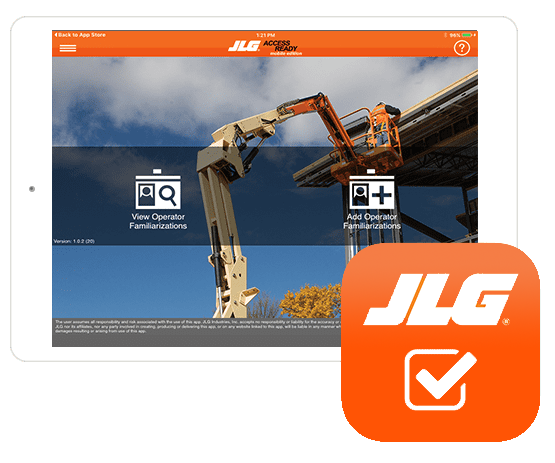A forklift safety checklist will ensure its safe condition. It will help you identify any potential problem with the forklift. Having a forklift safety checklist is essential.
A safety checklist should be completed with a "Yes or No" complete with a comment for "No" answers.
General information should be provided:
Name of workplace
- Division/Department/Section
- Running location
- Identification of forklift
- Work description (brief)
- Is the operating area completely separated from walkers?
- Are there clear and adequate safety signs warning walkers against forklift traffic?
- Are walker pathways and zebra crossings marked?
- Are workers warned about crossing forklift pathways?
- Are convex safety mirrors present at blind spots?
- Does the forklift specification meet the operating requirement?
- Is a clear forklift load chart provided?
- Is a seat belt provided?
- Is there a speed controller?
- Do the horn, reversing beeper, proximity indicator and flashing light function properly?
- Is there a protective structure provided on the forklift to prevent injuries during roll=overs or from falling objects?
- Is the maintenance performed regularly?
- Are forklift maintenance and repair records maintained?
- Is there enough fuel inside forklift?
- Is forklift battery charged?
- Are the forklift tires fully inflated?
- Are the tires pressure enough and safe?
- Are the tires in good conditions?
- Do the forklift brakes work?
- Is the steering functioning correctly?
- Does the gear shift work?
- Are the left and right mirrors available and clear?
- Do all indicators and gauges function properly?
- Are there any liquid leaks from the forklift?
- Are fuel, oil, hydraulic fluid and coolant levels full?
- Is there a portable fire extinguisher fitted on the forklift?
- Are hard hats required for forklift operators?
- Is personal protective equipment such as eye goggles, ear plugs and safety shoes available to operators?
- Are forklift operators or drivers certified?
- Does the driver understand the load chart?
- Is appropriate training provided?
- Have forklift drivers been given adequate training?
- Are the drivers familiar with the workplace layout in the plant site?
- Do forklift drivers follow the pathways correctly?
- Are forklift drivers or operators in good health?
- Does the forklift driver know the maximum speed?
- Are there speed limits for powered equipment on site?
- Are there appropriate traffic management plans at the plant site to prevent collision of forklifts with people and other mobile equipment by separating them in time or space?
- Are all safety procedures related to forklift inspection, operation, clean up and maintenance established, maintained and communicated to operators?
- Is there a monitoring and supervision system for ensuring all safety procedures work?
- Are work schedules adequate to move materials without operating the forklift at excessive speeds?
- Are only certified drivers allowed to operate a forklift?
- Is load checking always performed for load stability?
- Is load weight always checked before loading to avoid overloading?
- Is the load always lowered prior to the forklift being in motion?
- Are safe distances provided from the edge of ramps, docks, drains, gutters, floor openings and any other opening and obstacles established to prevent forklift accident?
- Are all ramp or dock edges safeguarded and visibly marked?
- Is the forklift allowed to lift workers using forklift to do certain job?
- Is the forklift allowed to be used for doing other jobs instead of lifting?
- Is the procedure for the safe battery charging or fuel filling established?
By Lukman Nulhakiem
Lukman Nulhakiem is a chemical engineer who has experience in hazard recognition and hazard control studies. Visit his blog at cemicalplantsafety.net to learn more about safety in chemical plant and workplaces in general.
Article Source: http://EzineArticles.com/?expert=Lukman_Nulhakiem
Article Source: http://EzineArticles.com/5056035





